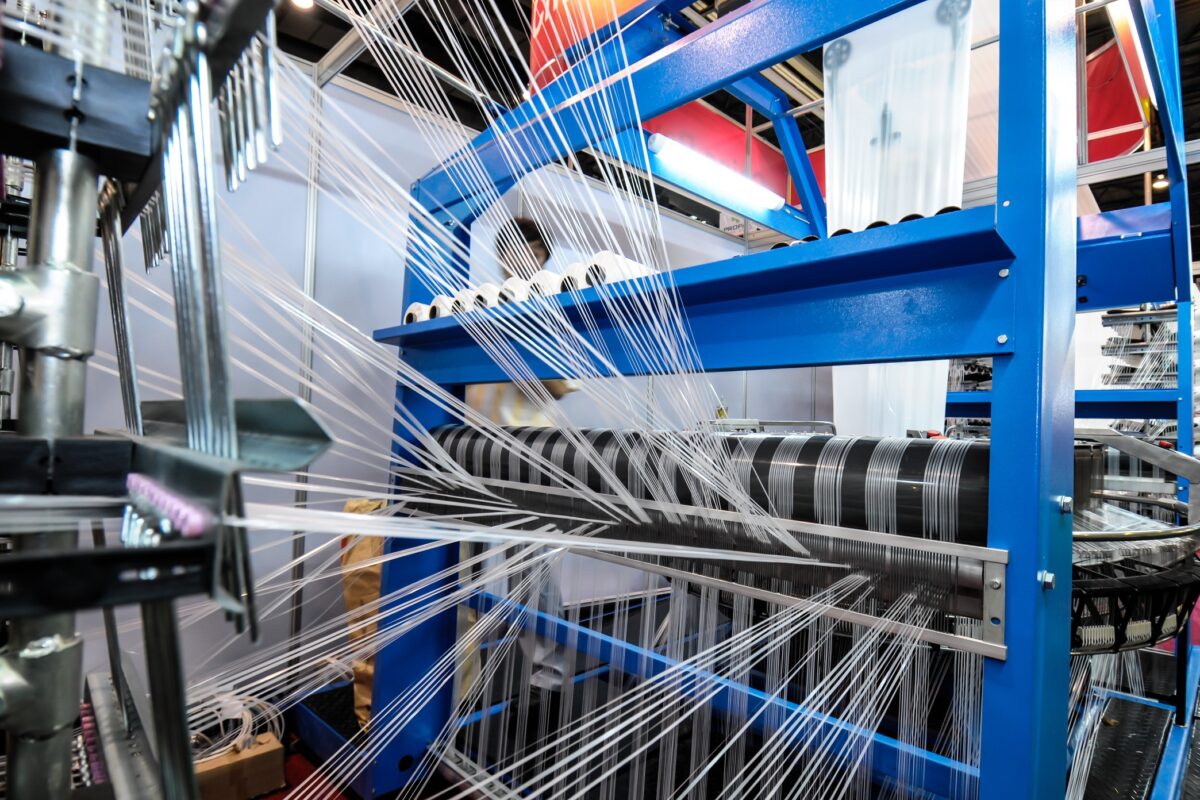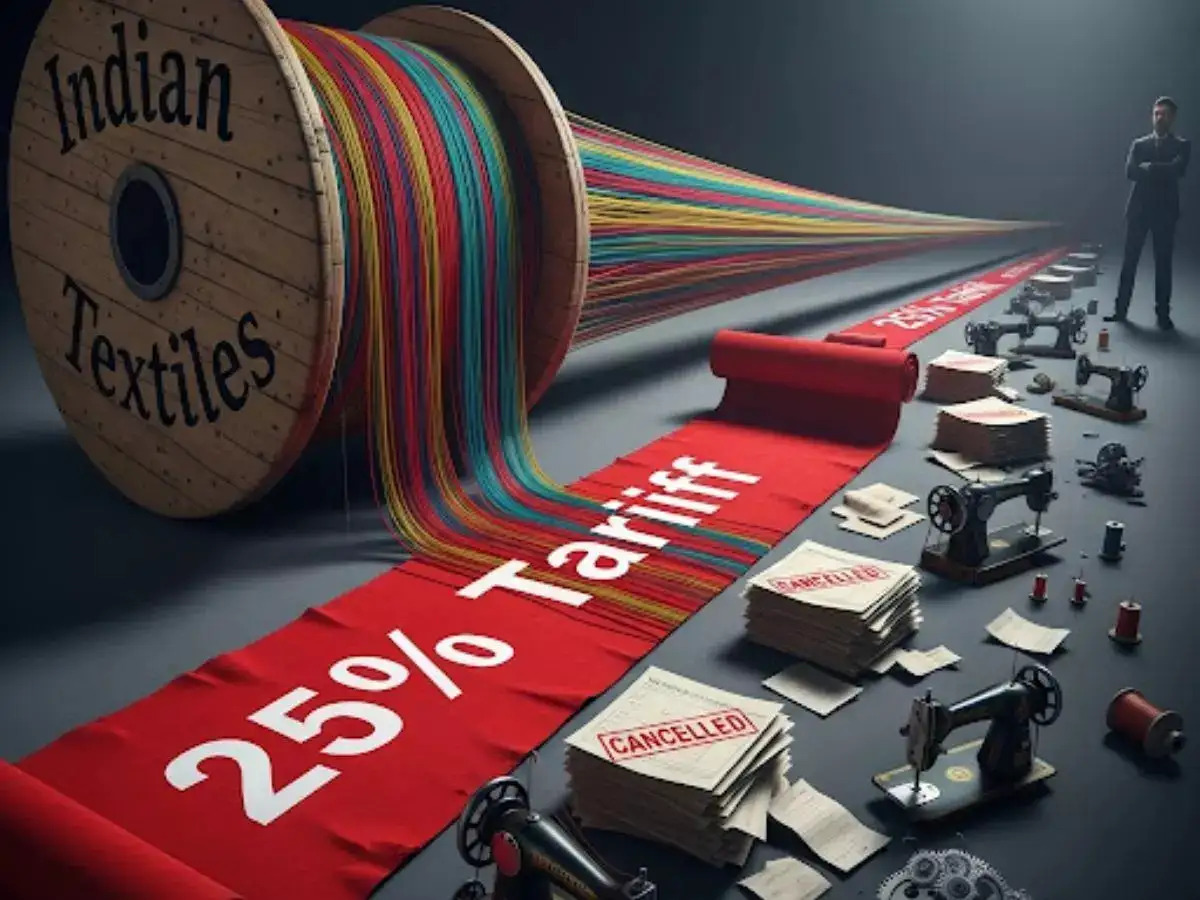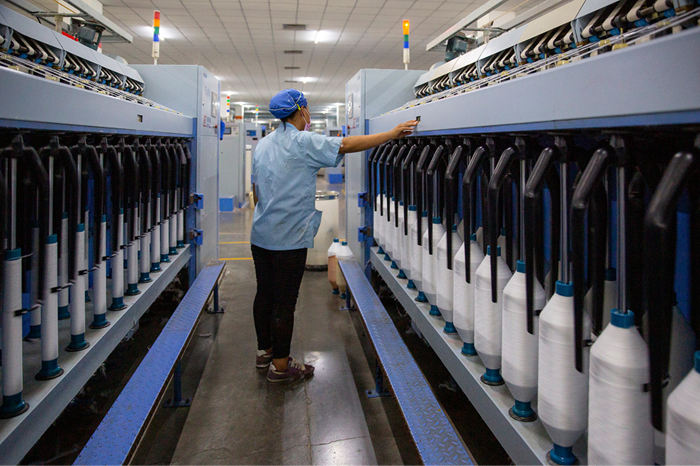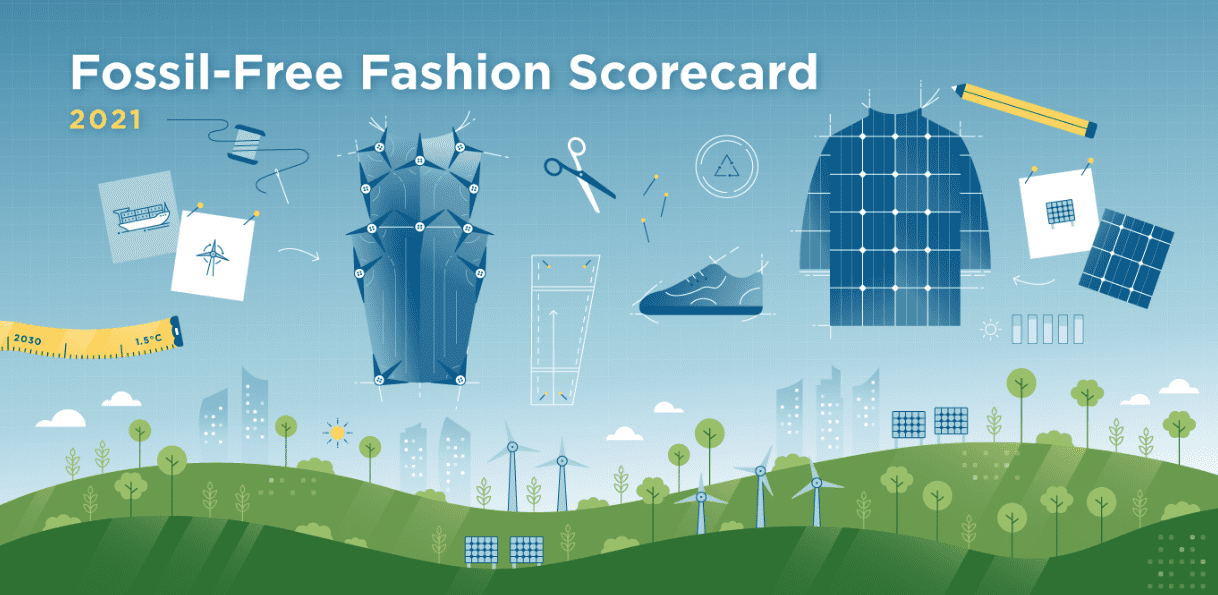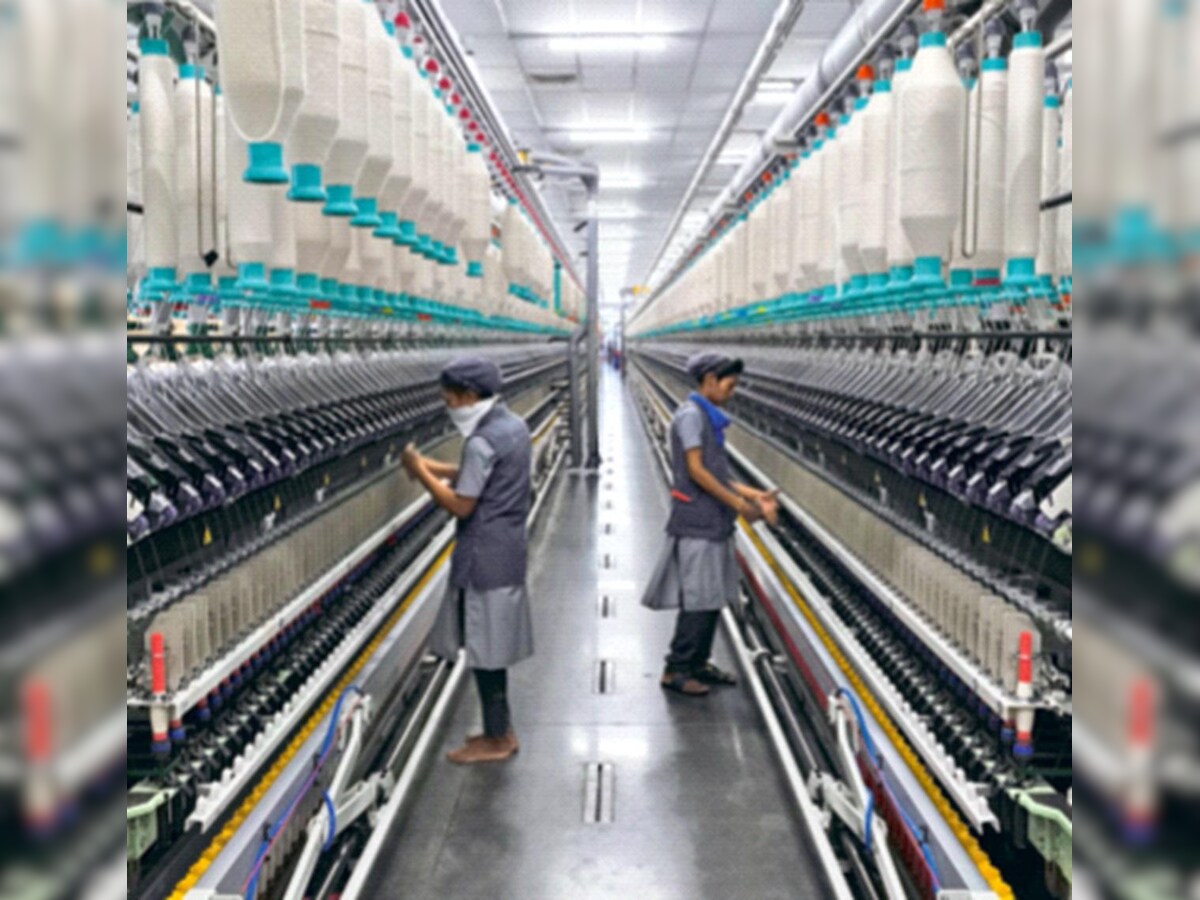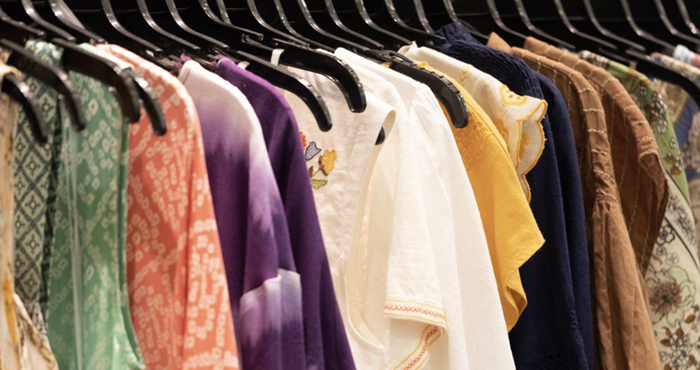FW
Navi Mumbai has launched an innovative project for managing post-consumer textile waste. Having gained momentum this month, this initiative aims to recycle discarded textiles into valuable products while promoting sustainability and employment.
Being executed by the Textile Committee under the Ministry of Textiles, in collaboration with the Navi Mumbai Municipal Corporation (NMMC), this initiative began from CBD Belapur and will gradually cover all areas under the NMMC jurisdiction. While the fiber making procews may take time, the initiative will become fully functional within the next six months, says Dr Kailash Shinde, Commissioner, NMMC.
The project is being executed in collaboration with SBI Foundation, IDH India Hub, National Institute of Fashion Technology and Tisser Artisan Trust. As a part of this project, NMMC will install designated collection bins in 250 societies across Navi Mumbai to collect old clothes. NMMC has already installed 49 bins in 47 societies in the first phase in coordination with SBI Foundation and Tisser Artisan Trust,. The remaining bins will be placed in a phased manner.
To facilitate collection, a dedicated vehicle will be provided to gather textiles from various The collected clothes will be sorted and processed at a textile recycling center at Shakuntala Mahajan Multipurpose Building in CBD Belapur.
The segregation of usable textiles will be managed by the Tisser Artisan Trust which will then be upcycled using handlooms. This process will give new life to discarded garments by transforming them into different products. The finished items will be exhibited and sold in markets, with the involvement of women’s self-help groups to support economic empowerment.
The initiative will help reduce the burden of textile waste on NMMC’s solid waste management system while creating sustainable employment opportunities. It will particularly benefit local artisans and provide income opportunities for women.
Lenzing Group, a global leader in wood-based specialty fibers, successfully hosted the Lenzing Conclave at Radisson Blu Hotel in Ludhiana, bringing together key players from the textile industry. The event served as a platform for manufacturers, exporters, dealers, agents, and brands to explore Lenzing’s latest fiber innovations and their applications in knitted and woven textiles.
Lenzing showcased its advanced fiber portfolio, including Tencel Lyocell A100, LF, x Micro, Fill, and Lenzing Ecovero Black, with a special focus on innerwear, sleepwear, activewear, lingerie, and ethnic wear. The conclave provided insights into evolving industry demands while reaffirming Lenzing’s commitment to innovation, technical and marketing support, and supply chain solutions for a more sustainable textile future.
Avinash Mane, Senior Commercial Director for AMEA & NEA in Commercial Textiles at Lenzing Group, highlighted the company’s vision, stating, “As demand for eco-conscious textiles grows, Lenzing remains at the forefront of innovation, empowering brands and manufacturers with high-performance fibers that prioritize both quality and sustainability. Our Tencel and Lenzing Ecovero fibers represent the future of textile production, offering versatility while significantly reducing environmental impact.”
Through interactive discussions and product showcases, the conclave strengthened industry connections and reinforced Lenzing’s position as a global leader in sustainable fiber solutions. The company expressed gratitude to all attendees for their participation and looks forward to fostering partnerships that will drive meaningful change in the textile industry.
Kraig Biocraft Laboratories, Inc, a leader in spider silk biotechnology, has made a major scientific breakthrough by engineering the largest known spider silk gene insert into silkworms. This advancement nearly doubles the previous record, paving the way for next-generation high-performance silk fibers.
Led by Xiaoli Zhang, the research team has significantly expanded the potential of spider silk technology. "By increasing the size of the inserted genes, we are unlocking new material properties beyond what is currently achievable," said Zhang.
The achievement allows for the production of larger, more complex proteins, enhancing the strength, flexibility, and overall performance of spider silk fibers. Kraig Labs sees this as a key step toward developing advanced biomaterials for industrial, defense, and performance textile applications.
While pushing the boundaries of genetic engineering, Kraig Labs remains focused on commercializing its current recombinant spider silk production strains. The company is scaling up production to meet market demand while continuing research on future innovations.
"Our mission is to commercialize existing spider silk technology while pioneering the next generation of biomaterials," said CEO and founder Kim Thompson. "This breakthrough underscores our long-term vision and research expertise."
As Kraig Labs accelerates its recombinant spider silk production, it will provide updates on both commercialization efforts and ongoing advancements in biomaterial science.
To be held in the Ho Chi Minh City next month-international exhibition for the textile and garment industry machinery, accessories and fabrics-SaigonTex-SaigonFabric 2025 will witness participation by over 1,100 exhibitors from 25 countries and territories globally.
These exhibitors will come from the UK, India, Bangladesh, Belgium, Portugal, Germany, Italy, Japan, the Republic of Korea, Indonesia, Malaysia, the United States, the Netherlands, France, Singapore, Spain, Thailand, Turkey, Switzerland, China, and Vietnam.
They will showcase all aspects of the textile and garment industry ecosystem, including textile and apparel machinery, dyeing technology and chemicals, fabrics, and garment accessories, aiming to connect manufacturers, suppliers, and customers from Vietnam and around the world.
One of the highlights of the exhibition will include the Product Presentation & Parade (PPP) program featuring eight carefully selected themes. This program will showcase a wide range of high-quality products from exhibitors and introduce the latest advancements in textile technology directly to potential buyers in Vietnam.
A special feature of the PPP includes the fashion parade featuring a live showcase of trending outfits made from materials supplied by exhibitors. These exquisite outfits will be worn by professional dancers adding an artistic flair to the exhibition halls.
The organizers will set up a dedicated business networking zone, with the Vietnam Textile and Apparel Association (VITAS) leading efforts to facilitate key trade connections between exhibitors and buyers.
Attendees will have the opportunity to meet representatives from top international brands and explore cutting-edge textile solutions and technologies.
The exhibition will be co-hosted by the Vietnam Chamber of Commerce and Industry (VCCI), Vietnam Textile and Apparel Association (VITAS), Vietnam National Textile and Garment Group (VINATEX), CP Exhibition (Hong Kong), and CP Vietnam Exhibition Co.
As Vietnam’s leading textile and garment event, held twice a year in Ho Chi Minh City and Hanoi, SaigonTex - SaigonFabric has firmly established its position over the past 35 years. It serves as a platform for the country’s textile and garment industry to showcase its strength on the global stage.
In a recently released manifesto, The Textiles Branch of EuRIC (European Recycling Industries' Confederation) has laid out essential policy recommendations to boost textile circularity across the European Union by 2030.
Tackling the escalating issue of textile waste, the ‘EU Recyclers' Manifesto’ emphasizes on the critical need for bringing about a systemic change.
The manifesto highlights the unprecedented challenges facing Europe’s textile recycling sector, which are worsened by increasing costs, declining demand, and the rapid growth of ultra-fast fashion.
With EU citizens generating roughly 16 kg of textile waste each year, and only a small portion being properly recycled, EuRIC cautions about the severe environmental consequences of continuing to landfill and incinerate these materials.
To tackle this issue, EuRIC Textiles advocates a multifaceted strategy, which includes extending the lifespan of textile products, significantly increasing the use of recycled textile fibers, and dramatically improving textile recycling rates, which currently sit below 1 per cent for new clothing.
To achieve these objectives, the manifesto calls for the EU to implement key policy measures, such as Extended Producer Responsibility (EPR) schemes, ecodesign requirements, and the use of Digital Product Passports (DPP) to enhance consumer awareness. Furthermore, EuRIC is pushing for EU End-of-Waste criteria, fair-trade practices, balanced chemicals legislation, and stricter compliance monitoring to ensure transparency and prevent greenwashing.
The 4th Chaoshan Textile and Garment Exhibition (CTGE) 2025, held from March 18 to 20 at the Shantou International Convention and Exhibition Center, set new records in scale and participation. Spanning 130,000 square meters, the event featured 12 exhibition zones, 16 halls, and 1,026 exhibitors, attracting over 121,000 professional visitors.
The exhibition showcased 17 major domestic textile and garment clusters, covering lingerie, homewear, fabrics, and accessories. Buyers from over 40 countries, including the United States, Russia, and Turkey, further enhanced its internationalization. The event hosted 20+ fashion shows, 50+ brand launches, five thematic forums, and three matchmaking sessions. Highlights included the ‘Red-headed Boat Cup’ Design Competition, the Shantou International Intimate Garment Fashion Week, and the China Underwear Culture Festival.
A new ‘exhibition-first, factory-later, and exhibition-broadcast combination’ model was introduced, with over 100 influencers live-streaming. The lingerie live-streaming session alone exceeded 100 million yuan in GMV. Major e-commerce platforms like Tmall, Douyin, and Shein participated in the ‘E-commerce Platform Matching Street,’ reinforcing a ‘Buy Global, Sell Global’ strategy.
CTGE 2025 marked a milestone in China's textile industry, setting the stage for further growth. The 5th edition will continue this momentum in 2026.
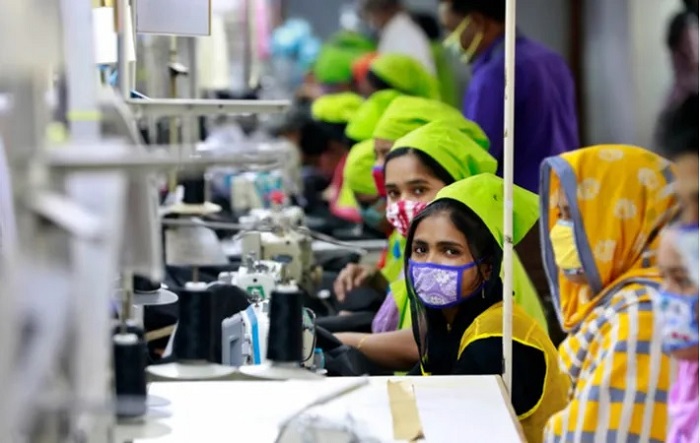
Bangladesh's ready-made garment (RMG) industry, a global powerhouse, continues its rapid expansion, leading to rise in raw material imports. Recent data from the Bangladesh Bank reveals a significant uptick in imports during the first four months of the fiscal year 2024-25 (July-October). Specifically, yarn imports jumped 25.8 per cent, while textile and related articles saw a 26.9 per cent increase compared to the same period in the previous fiscal. This rise underscores the growing demand for raw materials to sustain the nation's growing apparel production.
A lucrative opportunity for India
Bangladesh’s yarn imports went up from $968.7 million (July-October '23-24) to $1218.8 million (July-October '24-25), a rise of almost 25.8. Textile & articles thereof increased from $2363.8 million (July-October '23-24) to $2998.4 million (July-October '24-25), a 26.9 per cent rise. Raw cotton imports also saw a significant increase, rising by 15.4 per cent to $1258.8 million in the same period. Overall RMG raw material imports reached $7.92 billion in the first half of FY '24, highlighting the scale of the industry's material needs.
Table: Bangladesh's textile import landscape (July-October)
|
PRODUCT |
23-24 July-Oct. |
24-25 July-Sep. |
24-25 July-Oct. |
% Changes (comparison between July-Oct, '23-24 and July-Oct, '24-25) |
|
Raw cotton |
1091.1 |
955.8 |
1258.8 |
15.4 |
|
Yarn |
968.7 |
876.6 |
1218.8 |
25.8 |
|
Textile and Articles thereof |
2363.8 |
2061.6 |
2998.4 |
26.9 |
|
Staple Fibre |
436.9 |
349.5 |
517.8 |
18.5 |
Source: Bangladesh Bank
The rise in demand creates a significant opportunity for India, a major supplier of raw materials to Bangladesh's RMG sector. India's proximity, established trade relations, and competitive pricing make it a preferred source for raw cotton, yarn, and fabrics. As Bangladesh's RMG industry grows, India's exports of raw materials are expected to rise further. This symbiotic relationship benefits both nations, with Bangladesh securing essential inputs for its leading export sector and India boosting its export revenue and strengthening regional trade ties.
There are several factors driving Bangladesh's import growth. The primary driver is the increasing demand for Bangladeshi garments in global markets. This has led to an expansion of production capacity as investment in new factories and is growing. Bangladesh is also moving towards producing higher-value apparel items, requiring a wider variety of raw materials. While India is a key supplier, Bangladesh also heavily relies on China, importing approximately $10 billion worth of fabrics annually. This reliance highlights the potential for India to further increase its market share.
Indeed India has maintained a strong position in cotton and yarn exports to Bangladesh. There has been steady increase in the exports of raw cotton and yarn to Bangladesh from India. However, India faces competition from other countries, including China and Vietnam, in fabric exports.
Meanwhile, China is known to be a dominant supplier of fabrics to Bangladesh, especially synthetic and blended fabrics. As per Bangladesh Bank the country imported $10 billion worth fabrics from China. China's strength lies in its large-scale production and competitive pricing, especially for synthetic and blended fabrics. What’s more China's supply chain integration and efficiency give it an edge in fabric exports.
India’s focus to increase market share
Indian trade bodies are actively strategizing and implementing steps to grow India's share in exports, particularly in the textile sector and to countries like Bangladesh. Here are some major initiatives:
Focus on value addition and diversification: Trade bodies like TEXPROCIL and AEPC are encouraging manufacturers to move towards higher-value products, including technical textiles, specialty yarns, and innovative fabrics. This helps India compete beyond basic commodities. They are also promoting diversification of export destinations to reduce reliance on specific markets and mitigate risks.
Strengthening supply chains and infrastructure: Meanwhile the focus is on addressing logistical bottlenecks, including port congestion and inland transportation which is crucial. Initiatives are being taken to improve infrastructure and streamline trade processes. Schemes like the Mega Integrated Textile Region and Apparel (MITRA) parks aim to create world-class infrastructure for textile manufacturing, attracting investment and boosting production.
Promoting trade facilitation and ease of doing business: Trade bodies are working with the government to simplify export procedures, reduce compliance burdens, and improve the ease of doing business. Also, India is actively pursuing free trade agreements (FTAs) and preferential trade agreements (PTAs) with key trading partners to gain market access and reduce tariffs.
Enhancing quality and sustainability: Promoting adherence to international quality standards and certifications is essential for gaining buyer confidence. Emphasizing sustainable textile production, including eco-friendly processes and responsible sourcing, is becoming increasingly important to meet global demand.
Active participation in trade fairs and exhibitions: Trade bodies organize and participate in international trade fairs and exhibitions to showcase Indian textile products and connect with potential buyers. Facilitating buyer-seller meets and business delegations helps create direct linkages between Indian exporters and international buyers.
Government support and schemes: The PLI scheme for textiles provides incentives to boost domestic manufacturing and attract investment in key segments. Similarly, the Remission of Duties and Taxes on Exported Products (RoDTEP) scheme provides refunds of embedded taxes and duties, making Indian exports more competitive.
Specific initiatives related to Bangladesh: Border trade facilitation which involves improving infrastructure and procedures for cross-border trade with Bangladesh is a priority. Maintaining and strengthening India's position as a leading supplier of cotton and yarn to Bangladesh is a key objective. Trade bodies are exploring strategies to increase India's share in the fabric market in Bangladesh, particularly in specialized and value-added fabrics.
Italo-French premium jeans brand, Shaft Jeans has launched Shaft Pixel, a new style achieved through a 100 per cent Made-in-Italy digital printing process.
This innovative technique reproduces jeans elements and the characteristics of a worn-denim effect through a digitally placed print.
These jeans are created by printing the denim surface effect directly onto the fabric, eliminating the need for post-production garment treatments. This process significantly reduces raw material consumption, water usage, and chemical reliance, while also cutting production times and minimizing textile waste.
Founded by designer Monsieur Shafir in 1968, Shaft Jeans has been revitalized since 2004 under the leadership of Francesca Bacci, an experienced Italian jeans entrepreneur, and her children Letizia and Lorenzo Palchetti Tosi. Through Manifatture Twins Srl, they have infused new life into the brand while preserving its core DNA and high-quality standards, adapting it to meet the demands of contemporary consumers. The company launched Shaft Pixel jeans in Milan on February 28, 2025 during a guerrilla marketing event.
These jeans feature a wide-leg trouser fit and are crafted from a unique sweatshirt-like material composed of 63 per cent organic cotton, 34 per cent polyester, and 3 per cent elastane. Currently, they are sold exclusively on the Shaft Jeans website, priced at €437 for international markets and €349 for Italy. The company plans to offer custom-made and made-to-order versions of these jeans in physical retail stores in the near future.
The highly anticipated Textiles Recycling Expo will debut this year from June 4, 2025 in Brussels, Belgium. The two-day expo will gather key players from the textiles recycling industry. Organized by AMI, it will be supported by leading associations, including EuRIC, Fedustria, ReHubs, the Textiles Recycling Association, UKFT, WRAP, etc.
The Textiles Recycling Expo will provide attendees with an opportunity to engage with suppliers at the forefront of recycling advancements. Featuring a comprehensive exhibition, the expo will showcase cutting-edge developments in textiles recycling, sorting, and shredding technologies, and recycled fabrics. It will showcase an extensive range of innovations, highlighting the new technologies and best practices shaping the future of textile recycling.
In addition to the exhibition, the event will host a conference program featuring industry leaders, professionals, and key stakeholders. Delegates will gain insights through expert-led panel discussions and keynote sessions, covering topics such as advanced recycling methods and the latest European Union regulations.
Speakers from the European Commission, Euratex, WRAP, and Fedustria will offer perspectives on the challenges and opportunities within the sector.
A leading organizer of international exhibitions and conferences in the recycling sector, AMI brings extensive expertise to the event. The company’s portfolio includes the Plastics Recycling World Expo, held in both Europe and the United States, as well as conferences dedicated to mechanical and chemical recycling.
The Karnataka Government plans to establish a textile park in Guledagudda, in the Bagalkot district, through a public-private partnership.
The government has transferred 15 acre in Muradi village to the Deputy Director of the Handloom and Textile Department in Bagalkot. The tendering process to appoint a transaction advisor for the park's establishment is currently in progress.
According to the new Textile and Garments Readymade Policy, the state government will provide land, infrastructure facilities, and a subsidy of up to Rs 40 crore for the construction of textile parks in the state. Among the seven textile parks in the state, one is government-owned. Five of the privately-owned parks are operational, and the remaining one is set to begin operations soon, informs Patil.

